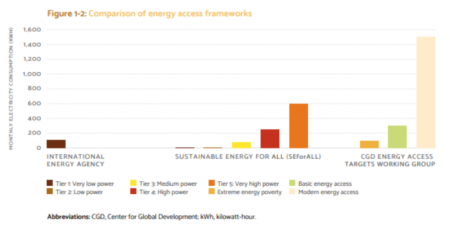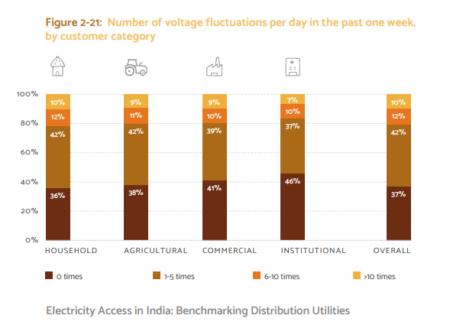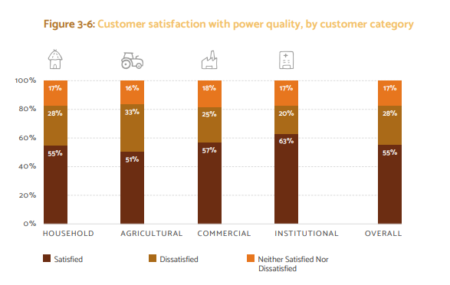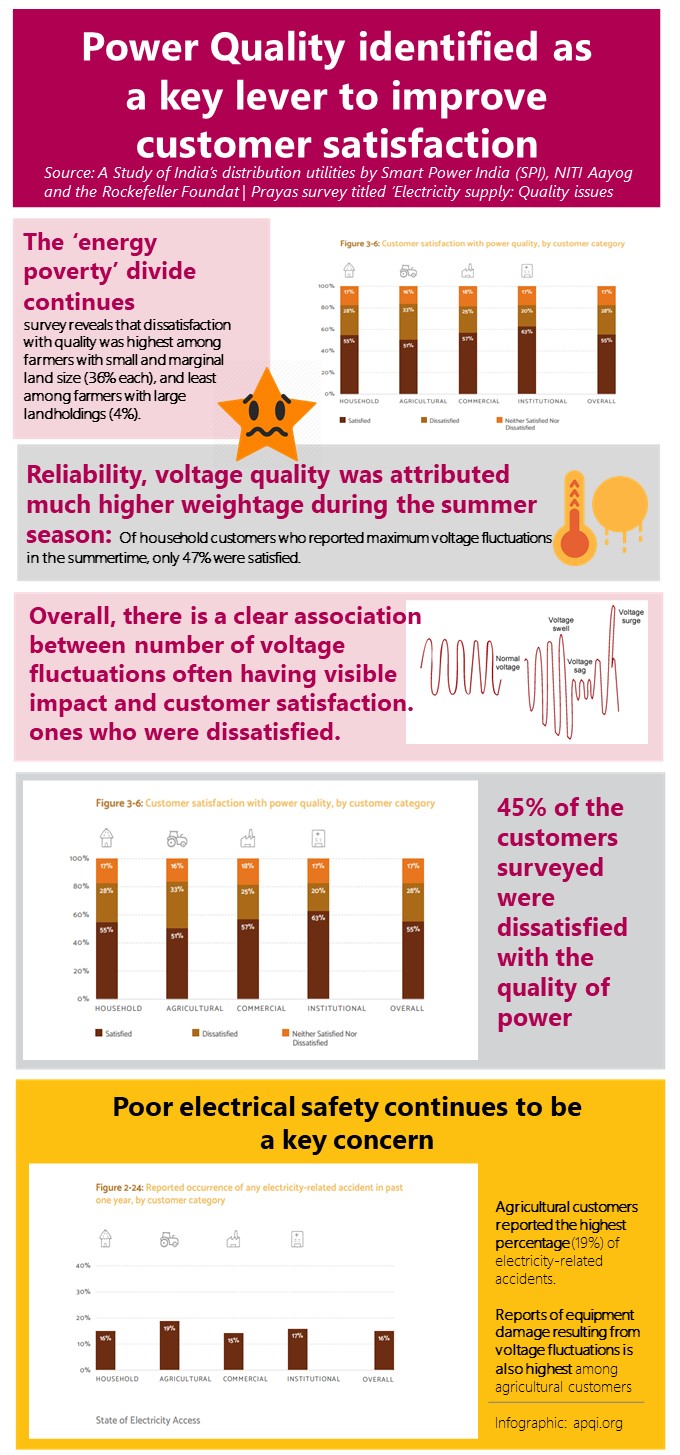Published On: Dec 24, 2020
The role of electrical power is a defining one when it comes to development of agriculture or industries and ensuring quality of life for citizens at large. In fact, the vast disparities in development between different regions of India have been linked to the access and availability of electricity. But many of the recent surveys conducted by different agencies show that to achieve real customer satisfaction and meaningful progress in development – reliability, safety and overall quality of power are much more important as compared to access and availability. Power Quality is an imperative for an aspiring nation rather than a choice. This is also an area where majority of work remains to be done for Power Distribution Companies and the Govt. policy and regulatory agencies.
Celebrating the achievement of 100% electrification without addressing the disparity and concerns in Power Quality is not appropriate, the surveys highlight. Redefining ‘access’ to electricity is the need of the hour. And customers are demanding this change.
INTRODUCTION
India’s electrification is a journey of string of challenges, often balancing on sustaining the quality and affordable electricity. For example, maintaining electrical supply in rural hinterlands is a key challenge for operational and financial efficiency, and also a source of lack of focus on quality of supply and customer services. The recent push for 100% electrification through various schemes and reforms starting from Ujwal DISCOM Assurance Yojana (UDAY), Integrated Power Development Scheme System, and Smart Grid Mission etc. are now expected to deliver and change the story of India’s electrification.
In a world where there is increasing competition among the suppliers to get the Customer’s wallet share, electricity in India still largely remains an exception to this scenario. However, things are changing rapidly. And if one were to gather the pulse of various consumer surveys that are being conducted – the customers are demanding the change. No doubt, the rapid increase in access and availability of electricity has added new customers and opened new avenues. However, there is also an increased level of expectation in terms of the ‘quality’ of power across every customer type.
While the availability of electricity has certainly improved over the past few years, recent surveys indicate that it is only half the battle won. Electrification has prompted an increasing use of modern appliances and electronic devices, many of which are sensitive to power quality issues such as voltage fluctuations. Continued power quality issues could render the availability of power considerably ineffective, significantly changing customer behaviour and power usage patterns.
Considering the recent data, insights from two surveys on the state of electrical power in India have been used for discussion here:
- A 2020 study of India’s distribution utilities conducted by Smart Power India (SPI), NITI Aayog and the Rockefeller Foundation makes some concerning observations regarding power quality in India.
- Prayas survey titled ‘Electricity supply: Quality issues persist, was conducted in 2019 and covered 3000 respondents across UP and Maharashtra
The study titled ‘Electricity access in India: Benchmarking distribution utilities’ covered 25000 electricity users and 25 distribution companies who served them. The sample size was spread over 10 Indian states and the respondents were classified into households, agriculture, commercial and institutional electricity users.
The study on India’s distribution utilities captures insights from both the demand side (electricity customers) and the supply side (DISCOMs). As the survey report mentions – the study takes a cue from global agency guidelines, such as the United Nations Sustainable Goal 7 and Sustainable Energy for All (SE for All) initiative, and uses the World Bank’s Energy Sector Management Assistance Program (ESMAP) Multi-tier Framework (MTF) to enhance understanding of the viability and reliable access of electricity.
Let’s assess the key insights and indicators.
‘POWER QUALITY’ DRIVES CUSTOMER SATISFACTION
Access is only the first step to measure the success of availability of electricity. The UN guidelines and the views of various agencies world over is to look at a much more comprehensive measure of access.
The MTF redefines energy access based on capacity, availability/duration, reliability, quality, affordability, legality, health and safety, and customer service. It measures not only whether users receive energy services, but also whether these services are of adequate quality, reliable, affordable, safe, and available when needed.
The survey is based on responses from household segments based on SEC class, Agricultural segment based on land size and industrial segment based on load type.
Across all customer categories, proportion of customers who were satisfied reported no voltage fluctuation were much larger as compared the ones who were dissatisfied. More than 75% of satisfied customers, across categories, reported no appliance damage in the past 1 year, while a majority (55%) of the dissatisfied customers said they had an appliance damaged in the past year.
Another supporting statistic in this regard is among the satisfied customers, 45% reported no voltage fluctuations, while only 15% of dissatisfied customers reported no fluctuations.
An interesting observation was the seasonal emphasis on quality of power. Reliability, voltage quality was attributed much higher weightage during the summer season: Of household customers who reported maximum voltage fluctuations in the summertime, only 47% were satisfied.
Access to power in terms of mere availability is not an equalizer – whether its urban or rural areas, or between small and large agriculture or commercial facilities. The ‘energy poverty’ divide continues as the survey reveals that dissatisfaction with quality was highest among farmers with small and marginal land size (36% each), and least among farmers with large landholdings (4%).
Overall, 55% of all customers expressed satisfaction with the quality of their electricity supply. Satisfaction varied across rural and urban customers, with 66% of urban customers satisfied but only 51% of rural customers satisfied.
In urban areas, 62% of the commercial customers reported satisfaction with the quality of their power supply, but the same was true for only 54% of rural commercial customers.
Change in ‘quality of life’ is not possible without ‘quality’ power reveals the Prayas Survey
Now that the power is ‘available’, users are expected to buy and use electrical and electronic appliances. However, that’s not what is exactly happening.
A separate survey by Prayas (energy Group) in western and northern India across UP and Maharashtra highlights how PQ issues have deeply affected consumer behaviour in these states. The Prayas survey titled ‘Electricity supply: Quality issues persist, was conducted in 2019 and covered 3000 respondents across UP and Maharashtra.
- In UP, between 50%-60% households experienced voltage fluctuations, and 47% reported damage to electrical appliances due to the same.
- In Maharashtra, voltage fluctuations affected 24%-26% households.
What use is mere availability of power if its quality renders appliances unusable anyway?
When power quality remains consistently poor, users limit the use of electrical appliances or even cancel buying the appliances. What’s more, they incur additional costs in buying solutions for PQ issues and power outages.
Around 28% households in UP spent extra to buy voltage stabilizers with 31% bought inverters to combat power outages. That is simply an economic loss for the country for poor PQ delivered.
‘POWER QUALITY’ CHALLENGES IN IMPROVING CUSTOMER SATISFACTION
CONCLUSION: THE NEED FOR URGENT IMPLEMENTATION PQ STANDARDS
Two numbers, derived from the survey, speak for the state of electricity in India:
- 63% of the electricity users around India reported more than 1 voltage fluctuation in a week, with 10% reporting over 10 fluctuations per day in a week.
- In total 45% of the customers surveyed were dissatisfied with the quality of power they received.
A lot has been done, achieved and celebrated in terms of the access and availability of electrical power in India. However, as the surveys aptly point to the ‘lot’ that remains to be done ahead in terms of ensuring reliability, safety and ‘quality’ of electrical power.
The link between voltage fluctuation record of the DISCOM and customer satisfaction is also clearly demonstrated by looking at data of each DISCOM.
- Nearly all of the customers of Gujarat West (95%) are satisfied with the quality of their electricity.
- Three of the five utilities in Karnataka – Karnataka Bangalore, Karnataka Mangalore, and Karnataka Mysore – are in the top five utilities based on customer satisfaction with power quality, with satisfaction levels ranging from 82% to 84%.
- The proportion of satisfied customers is very low (12%) in Meghalaya, which could be due to the high incidence of appliance damage (61% compared to the utility average of 31%) and voltage fluctuations (75%) reported by Meghalaya customers.
- Four of the five utilities in Uttar Pradesh – all except for UP Kanpur – are in the bottom five utilities in terms of satisfaction with power quality. In all these utilities, voltage fluctuation is a major concern, reported by more than 70% of the customers.
The regional disparity in the way DISCOMS manage PQ is both shocking and evident from the survey. The survey results bring out a clear correlation between ‘quality’ and customer satisfaction which is crucial for technical and financial success of the DISCOMS.
A lot of new India’s ambitions – from digital India, smart cities, make in India to creation or Rurban facilities to boost agriculture rest on how successfully we can deliver ‘quality’ power. And if there is one thing that can pivot the ‘quality’ metrics for DISCOMS and Consumers – it is the PQ regulations and standards. The efforts to accelerate adoption and implementation of PQ regulations and standards, as prescribed by the Forum of Regulators, CEA and various other bodies is the first step to benchmark performance in PQ improvement. Good PQ is the best lever to improve customer satisfaction for DISCOMS and drive good growth through greater revenues and profitability. Quality of power drives Quality of life for Citizens.
REFERENCES
- Electricity Access in India Benchmarking Distribution Utilities October 2020 – https://niti.gov.in/sites/default/files/2020-11/SPI_Electrification_15.pdf
- Discoms in India need to improve power quality: Survey – https://www.siasat.com/discoms-in-india-need-to-improve-power-quality-survey-2010614/
- Electricity access in India: benchmarking distribution utilities – https://smartpowerindia.org/Media/WEB_SPI_Electrification_16.pdf
- Survey of power quality standards and regulations in India and abroad – https://smartpowerindia.org/Media/WEB_SPI_Electrification_16.pdf
- Electricity supply: quality issues persist – https://www.prayaspune.org/peg/electricity-supply-quality-issues-persist










